GASTRONOMY OF DURANGO
Typical Food of DURANGO
Durango’s cuisine may be some of the most amazing in central and northern Mexico. It brings together dishes both from the center (gorditas with an infinity of fillings or enchiladas), and from the north (dried meat, chile and meat combinations). On the other hand, it also stands out for its inventiveness and history, characteristics of the state.
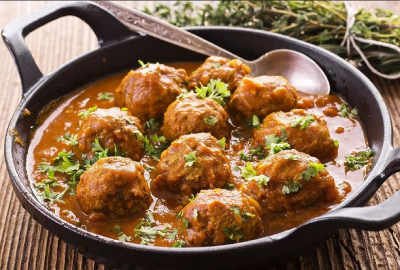
The people of Durango have known how to take advantage of the sun and have become masters in the art of dehydrating food. Beef and venison are sun-dried, but so are chiles or cooked corn. From the times when there were no refrigerators and it was necessary to preserve food for the dry or harsh winters, the multiple canned fruits (apricot, fig) or vegetables are also from the times.
The first settlers were semi-nomadic indigenous people: acaxas, xixenes, tepehuanos and zacatecos, who subsisted by hunting and collecting nopales, organs, mesquite and some herbs. Later they began to grow corn, beans and chili.
At present, tobacco, sweet potato, corn, chili, beans and squash are planted, in addition to many fruit trees, such as pomegranate, quince, peach, apricot, perón and apple. Pigs, cattle and sheep are also raised, which is why a lot of cheese is made.
There is a great family tradition in the preparation of sweet preserves, such as apple and quince dried apricots, quince and perón “caramel boxes” and jellies, coradillos, fig preserves, and sun-dried peaches.
This is how Durango cuisine took shape and engendered the dishes we know today. Discover the typical Durango dishes that will make you want a trip to this land of temperate forests and spectacular deserts.
Typical Dishes of DURANGO
Especially famous in this area are the tornachiles (chilaca-type chili peppers). Besides, also from these directions are the apricots, the dulces de leche and the classic pinole. Usually these foods did not always stay there; sometimes they were the base of more sophisticated dishes.
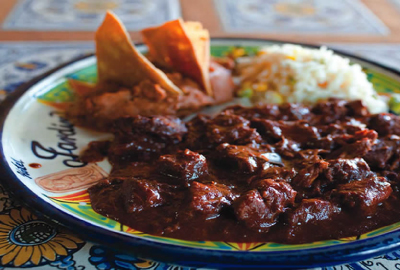
Durango’s gastronomy is characterized by the use of mestizo ingredients such as meat, dried chilies, eggs, beans, aged cheese, and fruits such as figs, apricots, apples, and pears.
Its origin dates back to pre-Hispanic times, when this arid region was inhabited by semi-nomadic Huichol, Tarahumara and Tepehuan peoples; They subsisted by hunting and gathering endemic animals and plants, which they dehydrated to transport them.
Subsequently, the culinary tradition of these peoples was mixed with ingredients and techniques from Europe, resulting in a wide variety of simple preparations full of history.
Durango’s gastronomy does not usually receive the attention and publicity of other regional cuisines in Mexico, but it hides some of the most valuable culinary creations in the north of the country.
Asado de Bodas (wedding roast)
An obligatory dish for all seasons is the asado de bodas, which, as its name indicates, was a stew for festivities. It is prepared with fried pork, bathed in a delicious marinade made from various chiles, spices, herbs, cinnamon and garlic.
This marvel, however, is rather a legacy of the Camino Real de Tierra Adentro, since it is also known in other directions of this historic route.
Caldillo Duranguense
Emblematic dish of Durango cuisine, which is part of the tradition of Serreño broths, one of the most representative of the entity, also known as caldillo de machaca. Dried meat, chili past, onion and garlic, are the ingredients of the endemic and traditional caldillo; although the recipe has been modified by replacing the original ingredients with others that are easier to obtain.
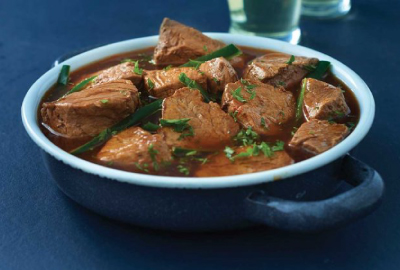
Caldillo duranguense began as a potato soup that was cooked in the 19th century by the people who built the first railroad in Durango. Adapting almost at the beginning of the 20th century, it became a very important dish that was only tasted on occasions such as weddings, baptisms, among others.
Likewise, the original dish began to be made with deer meat, with chili and cumin, giving it a strong flavor, characteristic of typical Durango food. As the years went by, venison meat was changed to beef in some places since it was very difficult to obtain it, but without a doubt, I recommend you try it original.
Its creation, like that of many other traditional caldillos, was in the search for dishes that would lessen the harsh climates of the vast Sierra Duranguense a bit. You can taste this exquisite dish in inns and restaurants throughout the state.
Barbacoa de Olla (Pot barbecue)
The word barbecue comes from the Caribbean area and means “wattle” (woven from sticks, reeds or reeds) or “scaffolding” that is placed inside the oven. It is said that when the Spanish conquerors arrived they found an immense variety of new foods.
And they also came up with amazing ways of cooking them, and with them came the famous barbecue. It is served hot with consommé and tortillas, and is shared with the family, as it is a tradition in Durango.
Gorditas Duranguenses
It is true that gorditas can be found throughout the country; But in no national gastronomy are gorditas as relevant as they are in Durango. Originally, the gordita was made in order to protect the stew that peasant women gave to their husbands to be consumed at rest time from work (milpa). Being a practical and delicious snack, it didn’t take long for it to spread throughout the country.
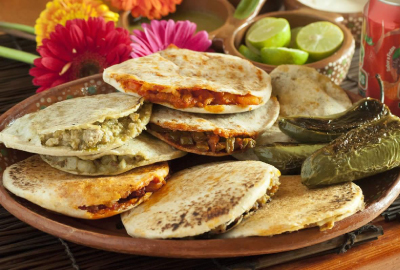
But traditional food from Durango makes a difference with these gorditas because they are prepared at the moment on the griddle. Some of the delicious traditional fillings for gorditas are red roast, discada, “huevo perdido”, pressed chicharrón, “huevo verde”.
Something that cannot be missing from these delicious gorditas is the sauce that gives it another flavor, they are very famous for type of chili with what they prepare it called “colorado”
You can find them in any corner of the state. We usually find them in corner stalls, inside markets, street stalls, since it is a typical dish that is part of our Mexican culture, but those made in the state stand out. municipality of Nombre de Dios, an obligatory point to visit and taste these preparations.
Chicharrones de vieja
For starters, chicharrones de vieja became popular in the 1940s, 1950s, and 1960s. The skin and hooves of the animals were put to other uses, and part of the edible portion was used to make the famous chicharrones de vieja. .
Chicharrones de vieja is air-fried and fried pork skin, with a crunchy texture, very customary in Mexico. This food is also known as carnitas de chivo and is sometimes used to fill enchiladas. This typical food from Durango is well known.
Tacos Laguneros
This member of Durango gastronomy arose, as its name suggests, in the region of La Laguna. Laguneros tacos are corn tortillas coated in lard, filled with onion, poblano pepper slices, and tomato.
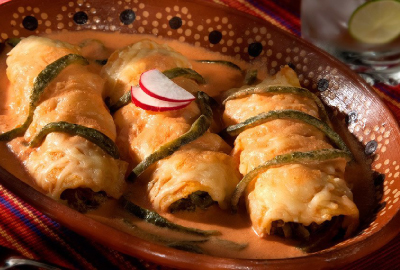
They are served in molds, au gratin and swimming in a rich sauce while their filling has slices of poblano pepper, egg in green sauce or pork ribs. They are bathed with cream and grated cheese, baked and served hot and it is a typical food from Durango.
This dish is so rich that it is one of the favorites for Durango families, since it is typical to prepare it at family gatherings.
Durango Red Roast
Without a doubt, the most prepared dish in Durango kitchens. Main element of the so-called relic, a delicious tradition where faithful Catholics offer the community and visitors a dish made up of Asado, patoles and “soups” as an offering to a saint as payment for a “manda” (promise).
This delicious stew is a mandatory filling for the traditional gorditas. It is worth mentioning that it differs from the wedding roast in that it is prepared mainly salty and only a sweet touch is added, provided by the orange. It is made with puya and guajillo chili peppers and the unique homemade seasoning.
Los Chuales
The chuales are another marvel of the dehydration-rehydration cycle: the ears of corn are cooked and taken out in the sun without throwing away the grains. This is how they are kept for months and in Lent they are cooked again with salt, garlic, onion and tomato and then cheese is added, or they are fried or used in pozole.
The result, in any case, is a formidable stew, although somewhat more difficult to achieve than the durangueño caldillo because unfortunately it tends to be more of a family dish than a restaurant dish.
Red Pipián
The pipián finds its origin in pre-Hispanic times, this delicacy was born in a great era in which great gastronomic wonders were created because before, this meal consisted of a chicken casserole with red chili, tomatoes and pumpkin seeds.
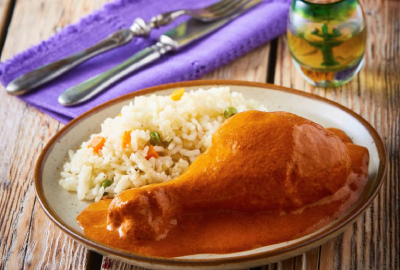
On the other hand, it is said that the indigenous people called this totolin patzcalmollo, so this typical Durango food had existed for a long time. The main component of the pipián is pumpkin seeds, although each pipián is different, not only in terms of its color, but also its flavor and consistency.
This is what makes it different from the others. It is highly recommended to try it on your visit to Durango if you want to experience all the essence of the state.
Gallina Borracha (drunk hen)
In Durango they must make the food last longer. This is because the first settlers were semi-nomadic and were dedicated to hunting and gathering some herbs. In the same way, in Durango lands it is customary to eat canned chili peppers and fruits such as figs, apricots, apples, and pears.
La Gallina Borracha, typical of Durango, is prepared with chicken meat that is cooked in a sauce of vegetables and alcohol, accompanied by white wine or sherry. It also has ham, chorizo and raisins and nuts. It is very simple to prepare this great typical Durango dish.
Tamales
They are similar to the tamales of Mexico City, as they are wrapped in corn husks and steamed. The difference and the special touch lie in the filling. According to the gastronomy of Durango, they go with red chili, pork, chicken with olives or refried beans seasoned with garlic, oregano and cumin.
Discada Duranguense
This delicious dish owes its name to the fact that it was prepared on a disc to plow the land, at rest time for the peasants, and it is a filling for the delicious gorditas.
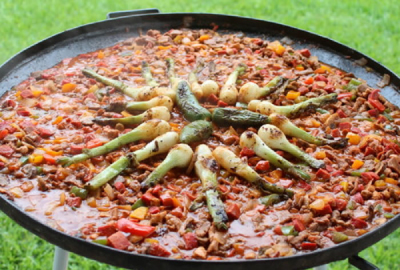
It is very popular in the states of the Mexican northeast; although the recipe varies between regions. In Durango, the main difference is that it is made with ground meat; It is also noteworthy that it is a traditional filling for the delicious gorditas.
Continuing with the northern tradition, the discada is consumed mainly on weekends to celebrate a family or sporting event or simply to hang out with friends, of course, accompanied by a beer.
Chile pasado
It is actually a type of spice for the gastronomy of Durango. Originally from the north of the state, this artisanal product is used in the preparation of a wide variety of stews; proof of this is its presence as an essential ingredient of the original caldillo durangueño. Due to its elaborate preparation method, it has a unique, smoky, sweet flavor that is easy to combine.
The chile pasado is endemic to the area and will be hard to come by in other parts of Mexico; Therefore, if you are visiting the city of Durango, do not forget to go to the supply markets and buy this ancestral product.
Enchiladas
Traditional delicacy that consists of fried tortillas in lard that are bathed with a sauce that can be peanut and almond or milk, egg and mulato and ancho chili peppers; the latter known as chiapaneca sauce. They are served decorated with chopped lettuce and grated cheese.
Queso Añejo (Old cheese)
Durango has a great tradition as a producer of dairy products and their derivatives. There is a wide variety of cheeses, most made with techniques inherited from the Spanish; although the Excelsior cheese produced in the Durango Mennonite communities also stands out, the second most numerous in the country.
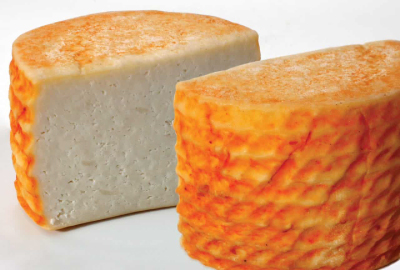
In the ranches, it is customary to raise the cattle to graze in the mountains in the rainy season and inside small huts near the grazing areas, products such as curd, cottage cheese, cream and, of course, ranch cheese are made.
Today you can get fresh, aged, and enchilado ranchero cheese in most traditional markets, in stores specializing in Durango products, and even in supermarkets throughout the state.
Durango meatballs
This dish of Arab origin, has been particularly adopted in the north of the country, it is prepared with ground chicken or beef that is later mixed with egg, tomato, rice or bread and spices such as mint. It is presented on a caldillo of chiles, cilantro and almonds.
If you are vegan, you can also try the vegan meatballs. They are prepared with a mixture of black beans, rice and sautéed mushrooms and are served over a duranguense tomato and ancho chile broth.
Typical Drinks of DURANGO
Durango has fertile and attractive lands to grow different high-quality fruits, which are the basis for preparing fresh juices and waters. The typical non-alcoholic drinks of Durango also happen to be representative of the Mexican state.
Durango Mezcal
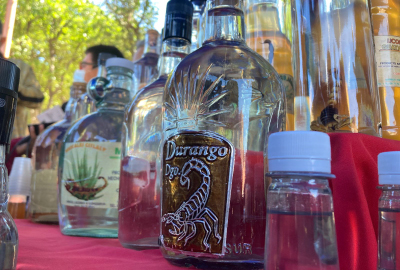
Mezcal has become one of the most representative products of Mexico due to its artisan character and the great variety that is available. The states that have designation of origin are: Guerrero, Puebla, Durango, San Luis Potosí, Zacatecas, Oaxaca, Tamaulipas, Michoacán and Guanajuato, San Luis de la Paz, municipality of Guanajuato.
The aforementioned are those that protect the production of this delicious drink. Durango mezcal is made with the agave stalk, once the maguey plant of the agave variety called “cenizo”.
And it is that there are several characteristics that make Duranguense mezcal unique, since it is elaborated mostly by hand, that the agave is endemic to the region (agave Durangensis, grows wild in arid lands and abundant in volcanic rock, which requires between 10 and 14 years of maturation to be harvested), and the peculiar flavor generated by the cooking method of the agave pineapples.
With an intense flavor, but complete in aromas and flavors of smoke, wood and quiote, it is a delight alone or accompanied with a little orange. There are several routes to the main artisan wineries of the town of Nombre de Dios, which is only 40 minutes from the capital.
If you visit Durango you cannot miss the tour through the legends, where the ancient peoples give an account of the description of the plant, its flowering and the traditions of the Huichols.
Corn Atole
Corn atole is another of the Durango topical drinks that are usually found mostly in the various towns of the region, for example in Ocampo. Corn atole is particularly prepared with corn dough and seasoned with salt, to be the drink that accompanies salty stews.
Peach liqueur
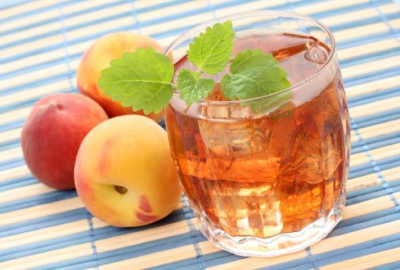
Among the list of the most popular drinks in Durango, we have peach liqueur, in fact it is one of the most demanded drinks in the state and this could be due to how easy it is to prepare and how easy it is to get the ingredients that make it up. .
It is a much softer drink than mezcal, made with ripe peeled peaches, left to ferment for a month with alcohol. Once the time has passed, sugar, water and vanilla are added, achieving a sweet, smooth and pleasant consistency, for those who want a more subtle toast from Durango.
Fruit Wines
El Nombre de Dios is one of the magical towns that we will find in the state of Durango and part of its attractions are fruit wines, a popular drink that you have to taste. The wine is obtained from the fermentation of the grape, since fruit wine is obtained in the same way by fermenting other types of fruits such as pineapple.
Durango is a state full of fruit crops, a great advantage for making fruit wine. This traditional drink from Durango is highly recommended for its exclusive flavor. It is made through the fermentation process of grapes and pineapples from the same region, managing to integrate freshness, subtlety, tradition and the identity of Durango.
Quince Liqueur
This alcoholic drink from Durango is ideal for those days when the heat is unbearable, as it is very refreshing and, like peach liqueur, its preparation is very simple.
This falls within the typical alcoholic drinks of Durango. It is also considered a very refreshing drink that contains quince, sugar and a touch of cane brandy. It is a high quality liquor that provides an original and very fresh flavor.
Pulque
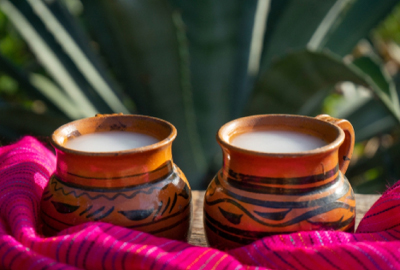
Pulque could not be missing from the list of traditional Durango drinks and it is so popular that it is very likely that more than 80% of the population has pulque at home.
Pulque is a typical drink from Durango, which contains a very minimal degree of alcohol. This is prepared with corn and salt. And, it is generally used to accompany stews and other meals.
Within the properties of pulque, you will also find many advantages. Many are the locals who will be able to guide people about what it is for, or how pulque is made, which are the most frequent questions from those who want to know about this drink.
Horchata
Rice horchata is a traditional refreshing drink widely consumed. It is one of the many traditional fresh waters in Mexico, where they are also made from hibiscus, tamarind and other typical fruits.
It is easy to prepare, falls into the category of refreshing drinks, and can accompany breakfast, dinner, or lunch. In other words, it is one of the drinks that best suits the taste of any type of food.
Typical Sweets and Desserts of DURANGO
Sweet Preserves
Nuts and dehydrated fruits, like jams, are an essential part of Durango’s gastronomy. Walnut snacks are also famous, a dry fruit of which the state is one of the main producers. Nuts and dehydrated fruits, like jams, are an essential part of Durango’s gastronomy.
Mostachones
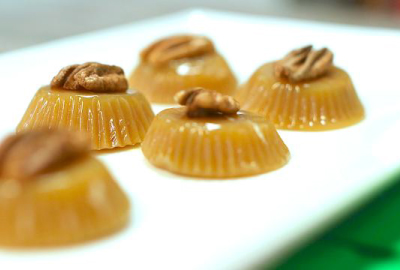
Mostachones are not a very popular or well-known sweet in Mexico, and that comes from Spain, since the time of colonization, however, and despite this, it is considered a traditional sweet from Durango and it is perhaps the only state in Mexico that He has it on his gastronomic list. It is a cake made with egg whites, walnuts, cream cheese and a sweet vanilla flavor, it is important that it is handled with care because it is very fragile.
Nut Bites
Like some of the most common in this region, this dessert is made from walnuts; since Durango is one of its main producing states in Mexico. For its preparation, a paste of this dry fruit is used, which is later painted and molded to create various figures.
Torrejas with maguey honey
Particularly the torrejas are known in Mexico as “French toast or French bread”. In particular, we know that it is a toasted bread bathed in a cream, which gives it a sweet flavor and a very rich softness. But in Durango they not only use cream and milk, they also use Maguey honey, which results in one of the richest and sweetest desserts in the region.
Nut “Palanquetas”
Palanquetas are sweets that are made with honey and walnuts. They are very common in almost all of Mexico, cheap and although we can find them in stores and artisan markets, we also find them at the hands of street vendors.
Pulque bread
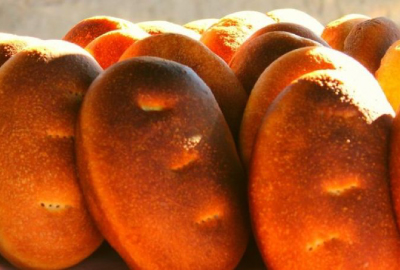
The process of elaboration of this bread is similar to any other bread, that is to say, it is used: dough made with wheat flour, egg, milk or water and sometimes lard. However, the region in its desire to create something totally different from the other regions of Mexico, adds pulque to ferment its flavor, its texture, its smell and this results in having this incredible Durango dessert: Pulque bread.
Walnut roll
The Durango sweet called Rollo de nuez is not very popular in the southern part of Mexico, but it is in the northern part and it is a sweet that is shaped like a “tube” and its preparation is so simple that you only need to cook milk and zulacar until creating a thick mixture and to which nuts are added. The next step is to roll it up with the help of a damp sky blanket fabric. It is a typical sweet from Camargo, Chihuahua and Durango.
Panochas
The word “panocha” lends itself to many jokes in Mexico, since it has a double meaning. But moving away from the bad words a bit, the panochas are breads, which have the shape of shells and this is where their name comes from. And the reason why it is considered a “dessert” of the region is because of its small size that lends itself to “add various elements” such as ham, cheese, salad, among others, and thus have a dessert for meetings. , parties and social aperitifs.
Pumpkin with piloncillo honey
The pumpkin candy is very popular during the dates of the celebration of the holy innocents (a religious celebration in December 28th, but at the same time it is similar to April’s Fools Day), that is to say: A seasonal sweet. Of course this is only for the other regions of Mexico, because in Durango you can find it at any time of the year.
Gorditas de nata
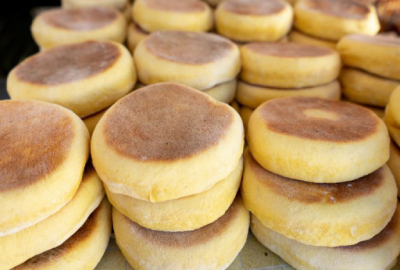
In Mexico, gorditas are usually associated as a fast food that is made with dough, in the shape of a moon and which is filled with cheese, beans, eggs or any other salty food. You can find its slightly lighter and healthier version. In other words, the gorditas de nata, which are made with wheat flour, have the same shape as the previous ones, but they are not filled with sausages, rather they use sweet cream to give them flavor.
Durango ice cream
More than 120 years of tradition support the unique flavor of Durango ice cream. These are carafe ice creams with unique flavors and a creamier texture than traditional ice creams. They originated in Ciudad Lerdo within the “Laguna Duranguense”, but today they can be tasted in the squares and parks of the main cities of the state. It is traditional to go with the family to taste the delicious ice cream with natural and original flavors.
Ranch bread
As its name indicates, this bread has its origins in the towns and ranches located mainly along the Sierra Madre mountain range. The presence of an adobe oven where different delicacies were prepared such as semitas, empanada, gordita de horno and maizcrudos are part of the landscape of the old houses and haciendas. The empanadas stuffed with chilacayote, sweet potato and fruit jam (ates) stand out. Fortunately, the custom of making these products in a traditional way has not been lost, they can be found in traditional markets, towns and highways throughout the state.
More Tourist Attractions in DURANGO
Flights & Hotels in DURANGO
More Tourist Attractions in MEXICO

Archaeological Sites
The Archaeological Zones are the cultural past of every Mexican. You will be amazed at the ambient, nature and the environment that surrounds them. Climbing to the top or being around it will take us back in time to admire every detail. México is a country of culture and traditions, many of which we have inherited from the pre-Hispanic inhabitants of this vast territory, although it is true that there were more settlements in the central and southern part of the country, it is also possible to find some archaeological remains in the north.
… Read More

States Of Mexico
Mexico has an incredible diversity of landscapes, where the beauty of its beaches, internationally recognized, stands out. In its vast territory of coasts, there are beaches of unparalleled beauty, and colorful landscapes. A large network of first-class hotels and tourist services is available to visitors to these beaches. Mexico is also mystical places, dotted with archaeological testimonies inherited from its original inhabitants. Monuments made by the Mayas, Aztecs and Toltecs are located in magical landscapes, like lighthouses in an ocean of natural beauty. They offer visitors buildings that tell their history, and museums that collect their cultural heritage. And that keep alive ancestral traditions, in ceremonies and festivals, where you can enjoy cultural activities and entertainment.… Read More

Magical Towns
A Magical Town is a place with symbols and legends, towns with history that in many cases have been the scene of transcendent events for our country, they are places that show the national identity in each of its corners, with a magic that emanates from its attractions ; visiting them is an opportunity to discover the charm of Mexico. The Magical Towns Program contributes to revalue a set of populations in the country that have always been in the collective imagination of the nation and that represent fresh and varied alternatives for national and foreign visitors. A town that through time and in the face of modernity, has conserved, valued and defended its historical, cultural and natural heritage; and manifests it in various expressions through its tangible and intangible heritage. A Magical Town is a town that has unique, symbolic attributes, authentic stories, transcendent events, everyday life, which means a great opportunity for tourist use, taking into account the motivations and needs of travelers.… Read More

Traditions in Mexico
It is practically impossible to make a meticulous, and above all, accurate selection of the places to visit in Mexico. Each place that our country houses is unique and beautiful in its own way. Mexico, with its nearly 2 million km², has a large number of scenarios to offer, as well as endless activities to do. Do not lose your way and enter the places to visit in Mexico. In Mexico, apart from the beaches and its famous archaeological sites, there are many other really interesting sites and activities that you should know. In the surroundings of the main cities you will find places full of culture and tradition, where you can spend relaxing, interesting and fun vacations. On your trip through Mexico you cannot stop obtaining souvenirs, the crafts that are made here are of the highest quality and recognized worldwide. A shopping tour cannot be missed.… Read More

Gastronomy
The Gastronomy of Mexico has a great diversity of typical dishes, which is why it was recognized by UNESCO as Intangible Heritage of Humanity. The basic and representative ingredients of Mexican dishes are: corn, coriander, chili, beans, piloncillo, nopal and tomato. Mexican cuisine is also characterized by its sauces, which serve as an accompaniment to traditional dishes, prepared based on spices.… Read More

Ecotourism and Adventure
Mexico is one of the best countries for Ecotourism as it has a great variety of flora and fauna, as well as a large number of refuges for extraordinary species. You can enjoy recreational activities of appreciation and knowledge of nature through contact with it, such as: stargazing, observation of natural attractions, wildlife and bird watching. Throughout México there are more than 176 protected natural areas, 5 of them considered by UNESCO as Natural Heritage of Humanity. Just for this and much more, we believe that Mexico is a Paradise for Ecotourism.… Read More

Capital Cities
Folklore, gastronomy, literary culture, art and exhibitions, is what you will find in the capitals of the states of Mexico. To the north, colonial Mexico, Puebla, Guadalajara, Guanajuato, the Sonoran desert and the California peninsula. To the east Veracruz and the gulf. To the west Acapulco, Oaxaca and Tuxtla Gutiérrez. And to the south the Riviera Maya and the pyramids of Chichén-Itzá, Tulúm and Cobá in Yucatán, Palenque in Chiapas, the cenotes, and the Central American jungles.… Read More

Beaches
On the Beaches of Mexico you can immerse yourself in the intense blue ocean of the Pacific bays, sunbathe on the shore of the warm and transparent waves of the Caribbean Sea in Quintana Roo or even rest on the beautiful coasts of the Gulf of Mexico. Mexican beaches hide wonderful secrets for the traveler. By visiting them, in addition to enjoying the excellent climate and water activities, you can discover splendid archaeological sites and interesting colonial cities without traveling long distances.… Read More

